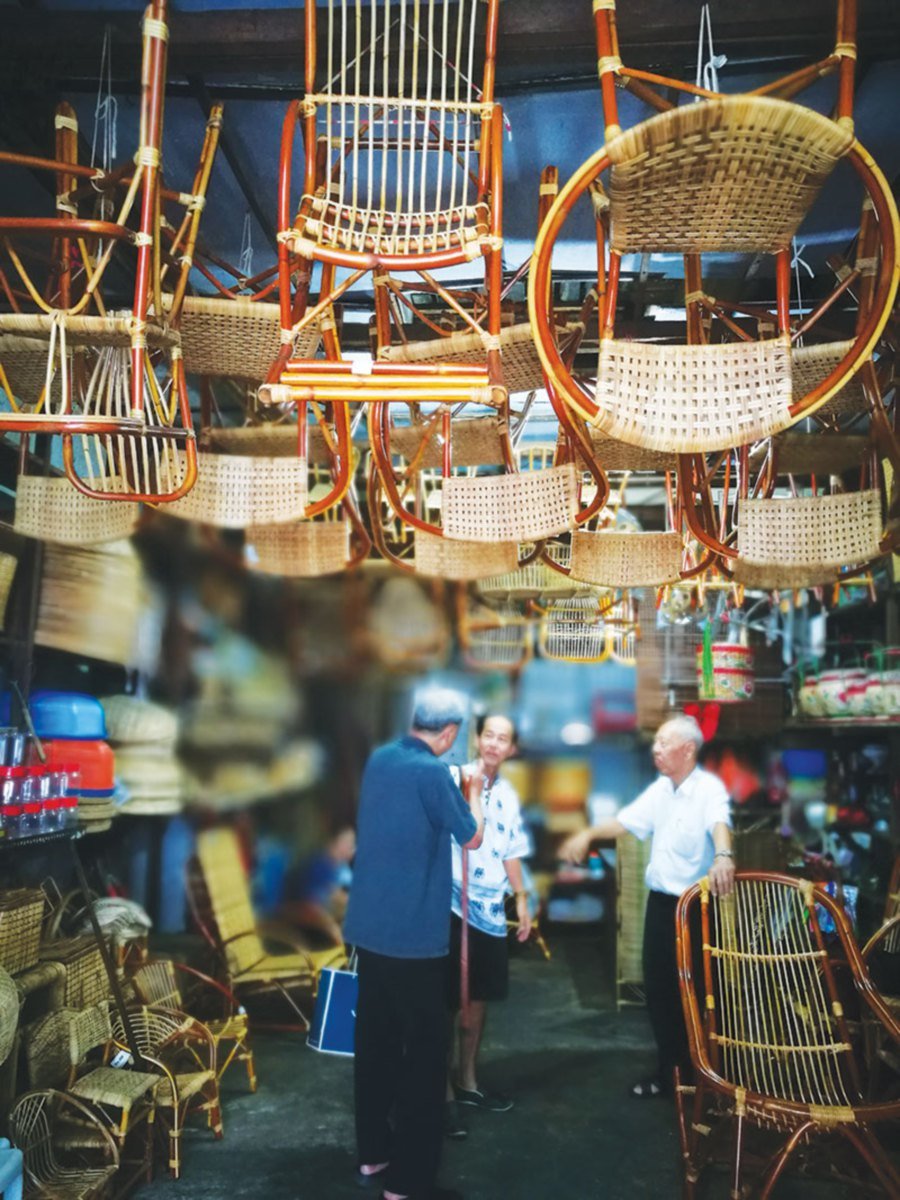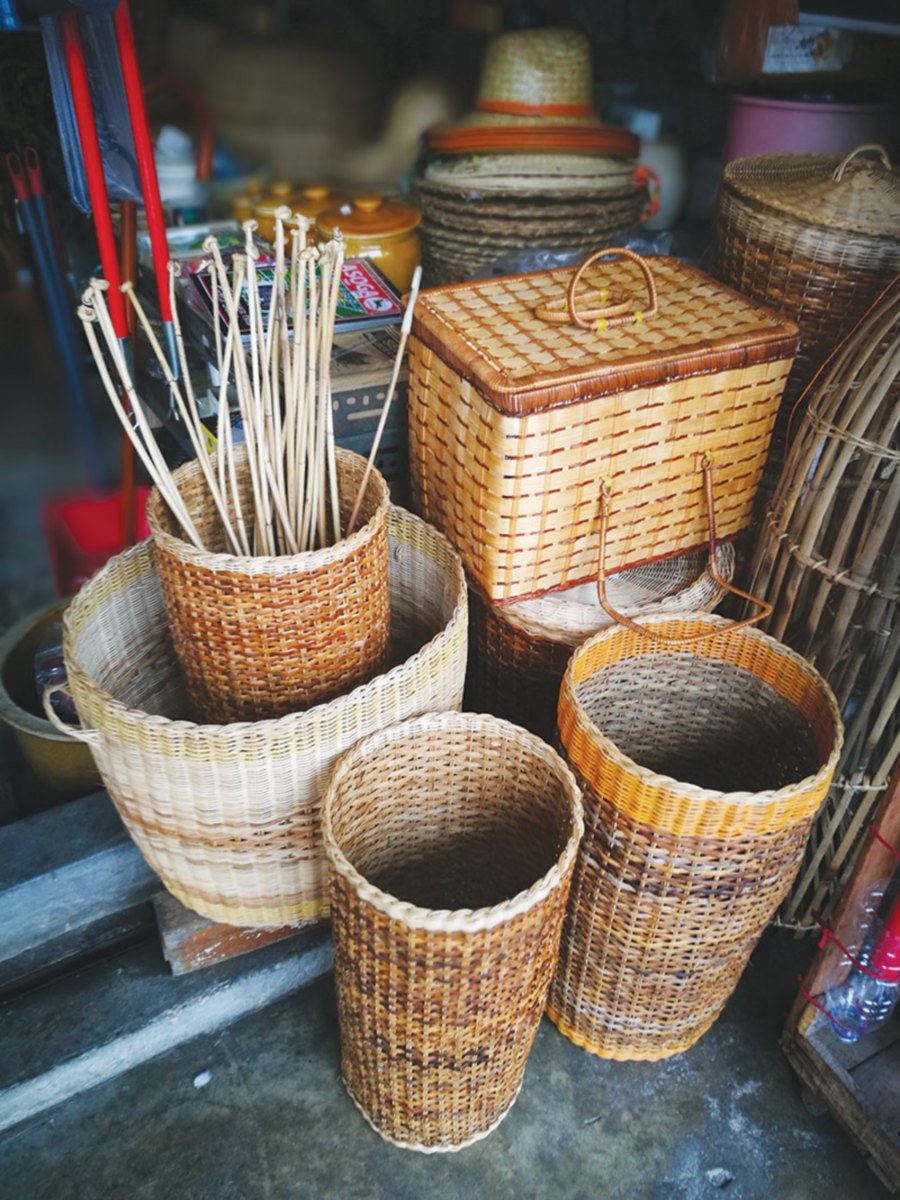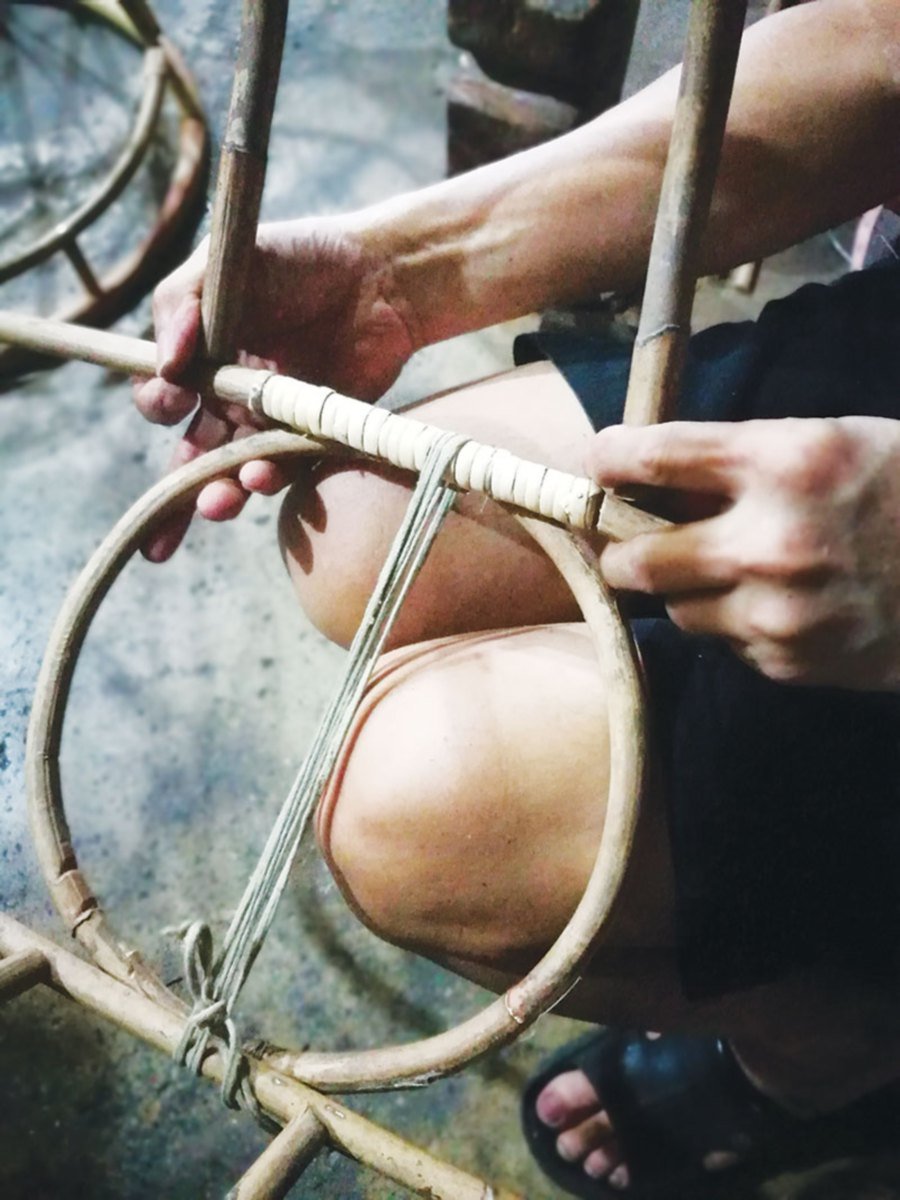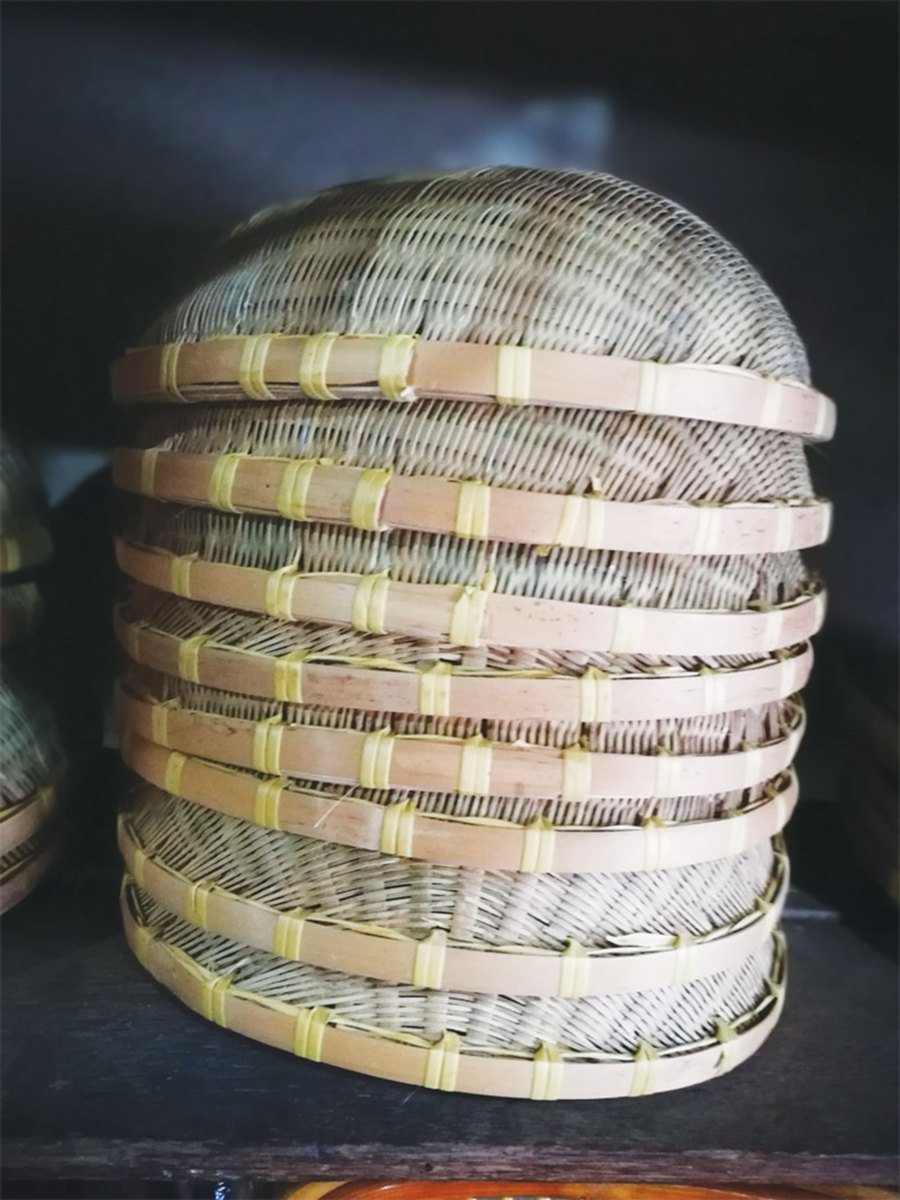
Last Man Standing
Published on July 30, 2017 | by nst.com.my

A sombre mood envelops the tiny old shop located on Jalan Engan in Batu Pahat, Johor. “It’s time for me to retire and there’s nothing much I can do,” confesses Tay Yak Seng, his voice melancholy.
At 57 years of age, Tay is the last cane maker in this small town on the west of Johor. And his artisanal skills may die with him when he finally decides to rest his hands. “My daughters know how to weave, but I’m discouraging them to take over the business,” he reveals, adding: “The money you get isn’t much and it comes slowly. There are also no rest days. You need to have a lot of passion to do this, something that I don’t feel many youngsters have in them these days. So, no point la.”
Bandar Penggaram was once a bastion for old artisanal products, hand-crafted by skilful masters. “In the 1970s, there were about seven cane makers here. But year after year, they began closing shop. Today, there’s only me,” confides Tay, tears welling up in his eyes.
The town has undergone some radical changes in recent times. Hipster cafes and franchised fast food chains have mushroomed in abundance. Even the rundown pasar besar (central market) where I used to follow mum on her Sunday morning marketing trips has been torn down to make way for newer structures.
Before long, the art of cane-making will just be another skill filed away in the chasms of the World Wide Web, only to be Googled should later generations happen to stumble on the word and are curious to know what it is.

Dying Art
A beautifully-crafted rattan baby cot stands on the sidewalk, swaying gently with the passing breeze. In one corner by the entrance of Tay’s ‘shop’, a basket filled with rotans (canes) makes me flinch as I’m reminded of my mum’s favourite tool of punishment during my younger days. The only sign that the shop exists is the small dusty old signboard above the door that reads ‘Xie Li’ in faded Chinese characters (a smaller red board with the English translation sits next to it) and the persistent sound of hammer on wood.
Tay’s late father, a Teochew hailing from a village in Shantou, southeast of Guangdong province, was skilled in the art of cane-making before he migrated to Malaysia. “My father (Tay Lip Yong) started the business back in 1947 in this very shop when he came from China. He already knew how to weave rattan back then. I don’t know who he learnt it from,” recalls the bespectacled Tay, his voice low.
Unfortunately, this traditional skill is dying a slow albeit certain death. Even for Tay’s family, it was only his elder brother and himself who chose to follow in their father’s footsteps. Meanwhile, his other siblings are mostly residing in Singapore and have no interest. Not even their children.
It was his brother who eventually took over the business but sadly, according to Tay, he passed on a few months ago at the age of 71. “My cousin used to have a shop in Muar, but he also closed down already. His sons don’t want to continue the work, so no choice lo!” he says, his voice laden with regret.

Helping Dad
For this amiable man, his interest in rattan-weaving only developed after he started making trips to his father’s shop. Recalls Tay: “My father didn’t have workers so I was roped in to help. After Form Five, I became a near-permanent fixture in the shop. It wasn’t long after that I too started making items.” Asked what drives him to do what he does, day in and day out, he replies: “It’s the satisfaction of seeing a finished product.”
His fingers deft as he weaves a piece of rattan, Tay shares that the skills he learnt had been through observations.“My father just taught me how to do the basket base. After that, he’d leave me alone and I just do only lo,” says Tay, with a shrug of his shoulders. Typically, a medium-sized basket will take him about a day to finish. And its price? Pretty steep. But considering how much work goes into making one, it’s certainly justifiable.
Transfixed by the way he works the rattan, I couldn’t help asking Tay about the kind of skills required to do what he does. He pauses before replying shyly: “No need skills la. Just need a lot of patience because it’s a time-consuming undertaking.”
A typical day begins at 7.30 in the morning for Tay. Once the doors are opened, he’ll head to his favourite perch — a stool — located at the back of the shop and start bending as well as hammering an array of rattans needed for whatever item he has been commissioned to complete.
At the time of our visit, he’s in the midst of completing a Da Tou Wawa (literally translated as Big Head Doll) for a Chinese association in town. “It’s not hard to make this but it can hurt your hands la.” admits Tay as he demonstrates how he bends a thin strip of rattan to fix onto the basket. For the thicker rattans, bare hands alone are not enough. He needs to use pliers and brute strength to manipulate the material to the desired form.

Supply and Demand
The best type of rattan to work with, says Tay, is rotan manau. It produces beautiful furniture that can last for a century or more if taken care of properly. All it needs is a good wipe down using a damp cloth and just ensure that it’s not exposed to harsh weather. But, adds Tay, it’s getting more difficult for him to lay his hands on this species nowadays.
“It’s easier to get the rotan air or rotan merah,” adds Tay. He uses them mainly to weave his baskets, simple stools and many of the items in his shop, which also include miniature crafts lined on a shelf above where he’s seated. “These rattans are easily found in Pahang’s jungle,” discloses Tay, before telling us that he sources them from various suppliers around town.
Is there still a demand for such traditional items, I muse aloud. “Got,” replies Tay, before continuing: “There are people who still like these things. I have customers from as far as Singapore who converge on my shop. Rattan chairs are the best because they’re cooling. You can sit for hours and not feel hot. Unlike modern sofas. Many older people like them.”
As he speaks, a lively group comprising the elderly enter the shop, stopping at various items and cooing their pleasure at the display. The rocking chair seems to be their favourite. And guess what? They are from Singapore!

What Next
The affable Tay chuckles when I ask him whether his favourite subject at school was woodwork, an assumption made based on his chosen trade. “No! I liked maths!” he exclaims, correcting me good-naturedly.
My astonishment continues when he confides shyly that his other passion is collecting stamps. “I’ve been collecting for 50 years now,” says Tay of his hobby which began when he was in primary school. His favourite stamps in his vast collection are the classic British stamps that were used during British rule in Malaya.
The minutes tick and soon it’s time to bid Tay farewell. Shaking his hand, I can feel his heaviness. His voice low, he confides: “It’s sad to let this (trade) go. But what else can I do? There’ve been people who’ve approached me before this saying they wanted to learn, but none of them have been genuine or serious enough to really do it properly. So I’m not sure what’s going to happen when I’m no longer doing this.”
More stories
>>> Batu Pahat: Land of Enterprise
>>> Avian Birding Site 4/10 – Sungai Balang Muar-Batu Pahat Johor
>>> Our Grandfather Story – Batu Pahat (A Playground Made From Trash in Malaysia)
>>> Malaysian comics creator Erica Eng’s journey from Batu Pahat to the Eisners
>>> Top 13 Batu Pahat Attractions
>>> 19 Tempat Menarik Di Batu Pahat | Panduan Bercuti Untuk Seisi Keluarga








